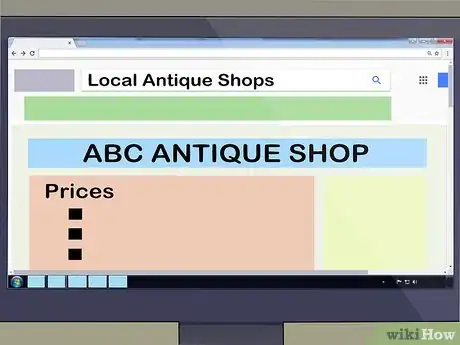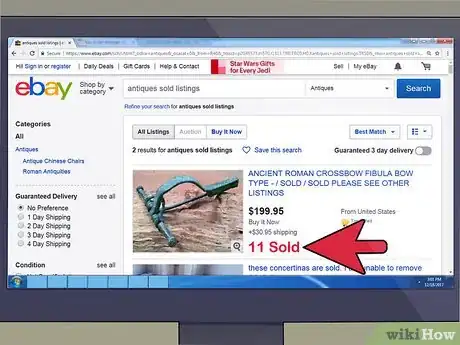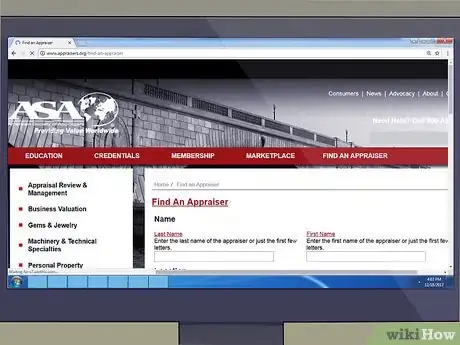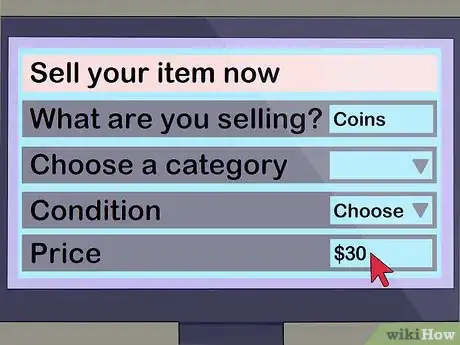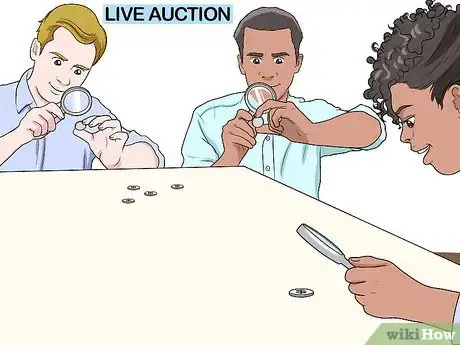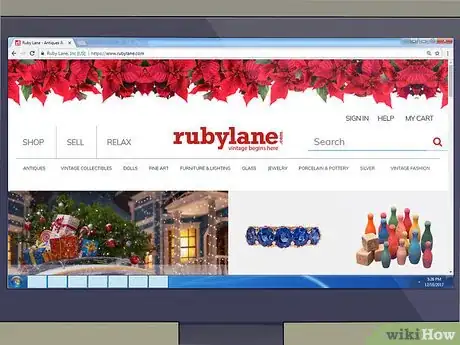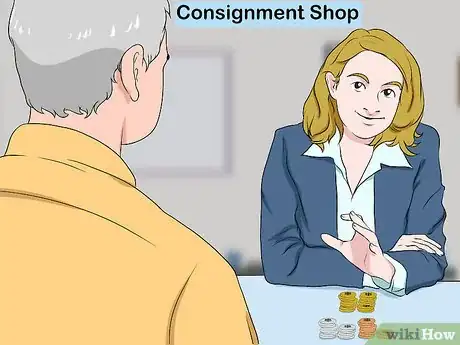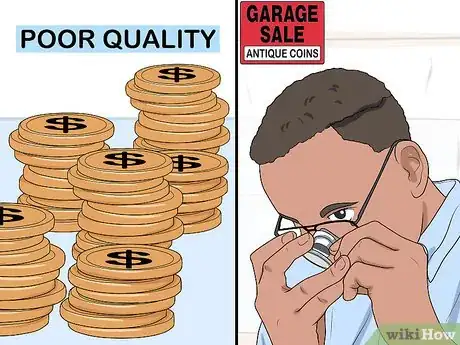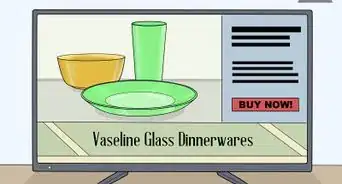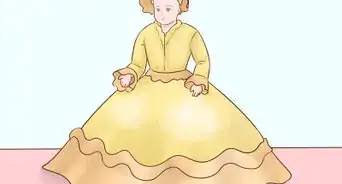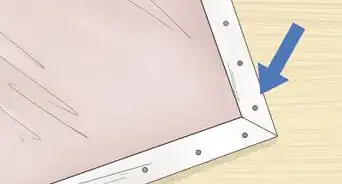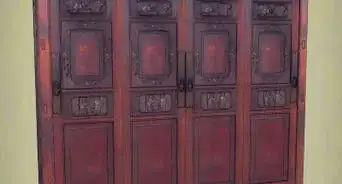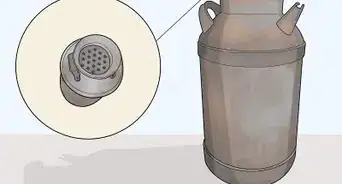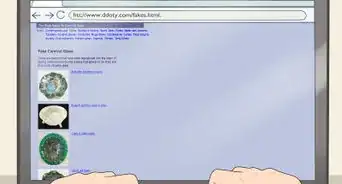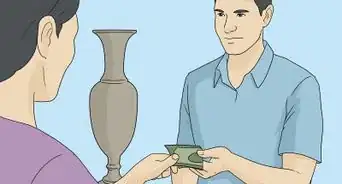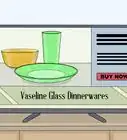This article was co-authored by wikiHow Staff. Our trained team of editors and researchers validate articles for accuracy and comprehensiveness. wikiHow's Content Management Team carefully monitors the work from our editorial staff to ensure that each article is backed by trusted research and meets our high quality standards.
There are 7 references cited in this article, which can be found at the bottom of the page.
This article has been viewed 44,286 times.
Learn more...
Whether you have 5 items or 500, selling antiques is a great way to remove clutter from your life while making some extra cash. Though the second-hand market may seem tricky to navigate, knowing how to price an item and where it’s most likely to sell will help you move your antiques for a reasonable amount of money.
Steps
Pricing Your Antique
-
1Look for prices at local antique shops. To see how much antiques are being sold for, check with the professionals. Search online for local antique shops and visit them to see how various items are priced. Remember that antique shops can often charge more for items because they have a sense of credibility, so your items should be priced at least 20 percent lower.[1]
- For some antiques, like stamps and vintage cards, visit specialty shops instead of general antique dealers.
-
2Search for sold listings on auction websites. Before selling an antique, check how much similar items are going for on sites like eBay. Search the item by completed listings or, if possible, sold listings to see how much people actually paid for it, not just how much people listed it for. This is particularly good for standardized antiques likes vinyl records and movie memorabilia.[2]Advertisement
-
3Consult a specialty price guide for recent value estimates. For some kinds of antiques, an easy way to find the current market value is through a printed or online price guide. Though not completely accurate, they break items down by type, rarity, and quality, giving a good ballpark estimate for how much your antique is worth. Search for guides that specialize in a specific kind of item as they will give you more detailed, updated information.[3]
- Try using price guides for collectible items like coins, stamps, trading cards, toys, and video games.
- Remember that price guides typically rank items by value, not how much they actually sell for.
-
4Take potentially valuable items to a professional appraiser. If you have an antique that may be incredibly valuable but is hard to judge accurately, pay for a professional appraiser to look at it. Look for appraisers that specialize in your type of antique and are accredited by a respected organization like the American Society of Appraisers. Professionals often charge between $200 and $400 per hour, but that is a small amount to spend on items that sell for thousands of dollars.[4]
- Your appraisal should include a written report breaking down what an item is, how much the appraiser believes it’s worth, and how they estimated the worth.
- Appraisals are particularly good for high-value items like paintings and artwork, coins, jewelry, and ancient artifacts.
-
5Price your item to sell. Unless you’re willing to keep an item for years or even decades, choose a competitive price point that will make people more interested in buying it. With the exception of truly unique or particularly valuable items, expect most antiques to sell for less than current market value and, in some cases, less than the price it was sold for when new.
Choosing a Place to Sell
-
1Sell high quality, valuable antiques at a live auction. To sell off rare or valuable items that are in mint or near-mint condition, put them up at a local auction house. Most houses take between 20 and 50 percent of the sale price as commission, the exact total determined by how much the item sells for. Though pricey, this gives you access to high spenders, which is especially important for items like paintings, arcade machines, and historic artifacts.[5]
- To find a local auctioneer, consult the National Auctioneers Association’s online database.[6]
-
2Use online auction sites to sell good quality items. When dealing with valuable items that are not quite mint condition, your best option is typically an online auction site. Places like eBay are great for attracting a wide group of potential buyers, but the items typically sell at lower prices. Though less trafficked, websites like Ruby Lane narrow your potential buyers to collectors willing to pay more for good quality antiques.[7]
- Auction sites are particularly good for selling coins, video games, and other items that can be easily searched for.
-
3Sell antiques to a specialty dealer or pawn shop for quick money. If you have a valuable, good-quality item that you want to sell quickly, your best option is a specialty dealer or pawn shop. Though they typically offer less than 50 percent of the current market value, you’ll get paid immediately and won’t have to deal with the auction process.[8]
- Pawn shops are best for general, high-demand antiques like jewelry, coins, and other valuable metals.
- Specialty dealers are best for high-value items like paintings or vases and specific items like movies, video games, and branded merchandise.
- Some dealers may ask you how much you’ll take for an item. Give them a number less than the current market value but more than your minimum sale price. Expect the dealer to haggle.
-
4Give your items to a consignment shop if you don’t want to sell them yourself. Consignment shops are businesses that house and sell your goods in exchange for a percentage of the revenue. Though most well-known for clothing, consignment shops are often perfect solutions for antique jewelry and accessories, especially those that are not highly valued. Contact your local shop for info on how to give items.[9]
- For help finding local shops, consult the Association of Resale Professionals’ online member database at http://www.narts.org/i4a/member_directory/feSearchForm.cfm?directory_id=8&pageid=3300.[10]
- Consignment shops take between 20 and 50 of the final sale price, depending on how much the item goes for.
- After around 90 days, most shops will either return your unsold items or donate them to a charity and give you a receipt.
-
5Save poor quality items for a garage sale. Even if an item is incredibly rare, few collectors will be interested if it is broken, damaged, or beaten up. However, it may fetch a few dollars at a garage sale, especially if it’s only considered poor by specialist standards, not general use standards. If you think an item is still somewhat valuable, ask buyers for an offer instead of listing the price yourself, since they’ll often go higher than you expected.[11]
- If an item is in good condition but missing parts, like a toy without the manual or a record without the sleeve, it may still sell on an online auction site.
Community Q&A
-
QuestionWhere can I sell a St. Benedict medallion?
 CageyCatTop AnswererYou can put items up for auction on sites like Ebay. You can sell items on Amazon.
CageyCatTop AnswererYou can put items up for auction on sites like Ebay. You can sell items on Amazon.
References
- ↑ http://abcnews.go.com/Primetime/story?id=132018&page=1
- ↑ https://www.consumerreports.org/cro/magazine/2012/10/how-much-is-your-stuff-worth/index.htm
- ↑ https://www.consumerreports.org/cro/magazine/2012/10/how-much-is-your-stuff-worth/index.htm
- ↑ http://money.cnn.com/2002/06/03/pf/yourhome/q_appraise/
- ↑ https://www.consumerreports.org/cro/magazine/2014/09/the-best-ways-to-sell-your-stuff/index.htm
- ↑ http://www.auctioneers.org/find-auctioneer/
- ↑ https://www.consumerreports.org/cro/magazine/2014/09/the-best-ways-to-sell-your-stuff/index.htm
- ↑ https://justvintagehome.com/21-places-to-sell-your-antiques-collectibles/2/
- ↑ http://abcnews.go.com/Primetime/story?id=132018&page=1
About This Article
To sell high-quality antiques like paintings and historic artifacts, put them up at local auction houses. If your items are in good quality and easy to search for, like video games and coins, list them on online auction sites. For a quick turnaround, sell your items to antique dealers or pawn shops. If you don’t want to sell an item yourself, see if a local consignment shop will take it. For tips on setting a price for your antiques, read on!
